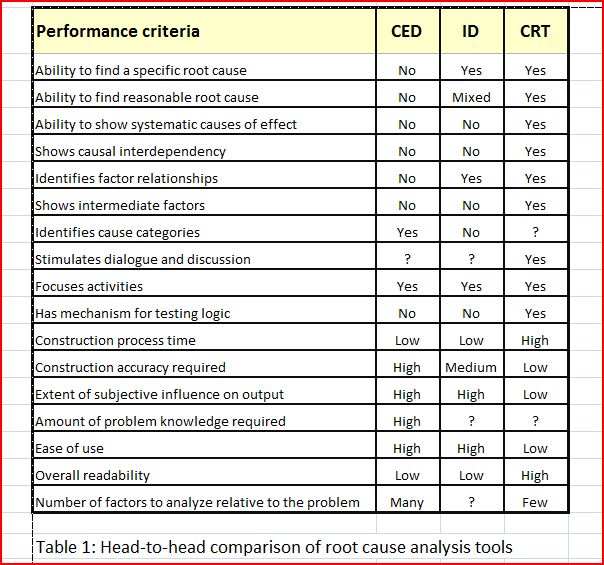1. Problem Recognition, Definition and Evaluation
What Root Cause Analysis Tool would be best to analyze the problems associated with time and budget overruns in O&G projects in the Niger Delta region of Nigeria
2. Development of Feasible Alternatives to determine the most appropriate Root Cause Analysis Tool
RCA assumes that systems and events are interrelated. An action in one area triggers an action in another, and another, and so on. By tracing back these actions, you can discover where the problem started and how it grew into the symptom you're now facing.
Three root cause analysis tools have emerged from the literature as generic standards for identifying root causes. They are:
1. cause-and-effect diagram (CED),
2. Interrelationship diagram (ID), and
3. Current reality tree (CRT).
3. Develop the outcomes for each Root Cause Analysis Tool
Root Cause Analysis looks at all three types of causes. It involves investigating the patterns of negative effects, finding hidden flaws in the system, and discovering specific actions that contributed to the problem. This often means that RCA reveals more than one root cause.
Doggett (2005) analysed the performance of these three popular RCA tools based upon objective performance criteria. His analysis found that each tool has advantages and disadvantages, with varying levels of causal yield and selected causal factor integrity.
The result of his finding is shown in the table below:
4. Selection of a criteria
The best RCA tool to adopt in analyzing the time and budget overrun for O&G projects would be the one that can show interdependencies between schedule, cost and other factors. One that can test logic and find reasonable root cause that is quantifiable.
5. Analysis and Comparison
????????
6. Selection of the preferred alternative
Table 1 below shows that current reality tree (CRT) best meets the selected criteria.
7. Performance Monitoring & Post Evaluation of Results
??????????????????
8. Reference:
1. Root Cause Analysis – Tracing a proble to its origins. Retrieved from: http://www.mindtools.com/pages/article/newTMC_80.htm
2. Doggett, A. M. (2004). A Statistical Comparison of Three Root Cause Analysis Tools. Retrieved from:
3. Doggett, A. M. (2005). Root Cause Analysis: A Framework for Tool Selection. Retrieved from: http://people.wku.edu/mark.doggett/qmjv12i4doggett.pdf

Hycienth,
ReplyDeleteWHY are you not seeking help BEFORE you publish instead of putting in question marks?
I am going to REJECT this posting and expect that for the W2.1 posting, you will seek out the advice and guidance from your colleagues.
For your analysis, you could have used any one of a number of Multi-Attribute Decision Making Tools (Chapter 14) OR you could have used some of the tools/techniques such as Force Field Analysis from Memory Jogger 2.
Once you have finished Step 5, that will give you the criteria to use for Step 7.
But the bottom line remains- you are NOT seeking out the help from your team and because of that, you are working much harder than is necessary or desirable.
BR,
Dr. PDG, Singapore
PS: You did do a good job on your problem statement and on your references, however.
ReplyDelete